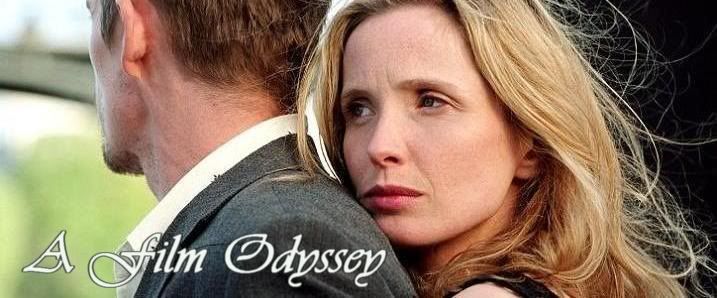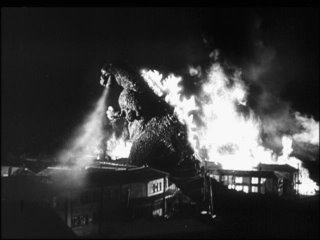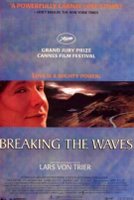World Trade Center (2006)
 World Trade Center’s script is so bourgeois and reductive that one might mistake it for the latest output from Paul Haggis. Still, just as Clint Eastwood took a flawed script and nurtured it into a near-masterpiece with Million Dollar Baby, that fact only makes what Oliver Stone and his superlative cast managed here all the more impressive. It’s hard to imagine what, subject matter aside, attracted Stone to this particular script, which packages the events of September 11th so tidily as to render many real-life occurrences as potential Hollywood inventions, but it’s also reassuring to see them rendered as respectfully as they are. What was but inches away from a practical remake of The Towering Inferno is thankfully the ruminative work it was meant to be, even if it is a bit dodgy along the way.
World Trade Center’s script is so bourgeois and reductive that one might mistake it for the latest output from Paul Haggis. Still, just as Clint Eastwood took a flawed script and nurtured it into a near-masterpiece with Million Dollar Baby, that fact only makes what Oliver Stone and his superlative cast managed here all the more impressive. It’s hard to imagine what, subject matter aside, attracted Stone to this particular script, which packages the events of September 11th so tidily as to render many real-life occurrences as potential Hollywood inventions, but it’s also reassuring to see them rendered as respectfully as they are. What was but inches away from a practical remake of The Towering Inferno is thankfully the ruminative work it was meant to be, even if it is a bit dodgy along the way.Both United 93 and World Trade Center approach the events of September 11th strictly within the context of that day. Neither film knows of any larger contexts, of wars and terrorism, or of the political brouhaha to come; like the people suffering the collective worst day of their lives, they only know the immediately observable details. But while United 93 and Paul Greengrass simply use their portrayal to make the viewer as miserable as possible from start to finish (as well as none too subtly underscoring the visceral elements of its subject matter), World Trade Center more aptly appreciates the horror that slowly dawned on that day. For many of those forced to watch the unfolding tragedy on television (as I cannot speak for the residents of the city that never sleeps), the horror, however obvious and potent, took some time to set it (and boy, did it ever). Stone is attuned to the power of the violent spectacle within the context of the city, and especially of the everyday-ness that was so abruptly shattered. United 93 treats the hijackings like the eerily foreshadowed events in a sequel to Turbulence; with but one miscalculation of direction (an incredibly stupid pan up towards the two towers followed by a title card reminding us of the date), World Trade Center has no idea of the events to come, they simply happen.
Some have criticized World Trade Center for diminishing the scope of the tragedy at hand, a possibility certainly exacerbated by the polished, Hollywood approach employed here (which, for my money’s worth, is no more or less acceptable than a bare-bones independent approach, all things considered equal; shaky camerawork and grainy film stock does not a realistic movie make). While I already addressed the film’s limited knowledge of the sheer mass of death and destruction, I think it important to acknowledge that no film could ever cover the entirety of that unfolding hell on earth. Like Titanic (quite possibly the most humane big-budget disaster film of last century), World Trade Center follows several stories within a larger framework, in this case, those of two Port Authority officers trapped beneath the rubble of the collapsing towers, and their panic stricken families. One could make thousands of films taking place on September 11th, 2001, and never cover the same details twice. What these do offer, however, are intimate details in the greater scale of it all, the events of World Trade Center providing but one look at the damage, both physical and intangible, from a microcosmic perspective.
In the case of World Trade Center, it’s hard to draw the line exactly where the faulty script ends and Stone’s more adept direction begins (and, of course, like all marriages of talent in the name of film, the line is somewhat blurry). The first act of the film is the most potently realized, arguably because it offers Stone the most freedom in how he portrays the many wordless events as they unfold (the newly installed digital projectors and sound systems at my local cineplex have thus far done little more than add another opportunity for advertisers and special effects to unconstructively attack my senses, but the use of sound and image during the collapse of the first tower, seen from within, makes it perhaps the most wrenchingly realized fifteen seconds of celluloid so far this year). Once the primary damage has been done, however, the film is more prone to the screenplay 101 pigeonholing, which is less attuned to nuances of character and the far-reaching scale of national tragedy than it is the importance of wrapping a crowd-pleaser with pretty paper and a big bow on top. Leave it to Stone, Cage, and the entirety of the cast, then, to lend the writing with the necessary component of soul, particularly during the agonizingly claustrophobic scenes of the two officers trapped beneath tons of concrete and assorted rubble. World Trade Center might follow the mold too much for a story such as this, but it ultimately knows well enough to acknowledge not only the scope, but the universality, of the tragedy it portrays. Artistically or historically, it may not be a definer, but is both a fitting memorial for the dead a uniter for the living.















